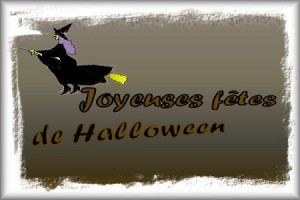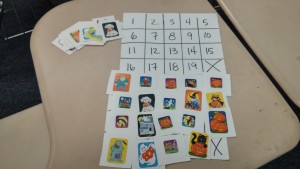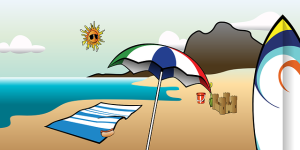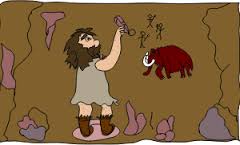As I mentioned in this previous post, a constant in my teaching practice over the years has been the inclusion of several Petit Nicolas stories in my curriculum. Although the stories were written decades ago, I find them ideal for my Intermediate Low’s (French 3 students) for the following reasons:
- The author’s conversational writing style provides lots of input on high-frequency vocabulary and structures
- Many of the stories have a corresponding cartoon video (on Youtube) that features a similar, but updated story line-great for interpretive listening tasks.
- The stories are easy to find—I have most of the collections, so a quick trip to the copy machine provides the text to all of my students; no lengthily Google searches required!
- The stories are humorous and engaging to the majority of the students.
- My students love the first feature film (They’d probably like the second one, too, I just haven’t bought it yet.)
This week, we read the story called “Je quitte la maison.” I’ve used this story for several years, not only because it’s cute, but also as a contextualized way to introduce my students to the future tense. Click here for the comprehension activities I created for this story (described below).
Day 1: I did a quick introduction of a few new vocabulary items, and then had the students make some predictions about what might happen in the first part of the story. Although I hadn’t yet formally introduced the future tense, my students had seen a few examples, so I could quickly explain the use of the tense in the predictions. I also have a poster in my room as a resource, so I can refer to it throughout these lessons. After the predictions, the students began reading the story and supplying information regarding details of the story.
Day 2: I began the period by verbally discussing the details that the students had provided. The students then discussed the inference questions in small groups, and then as a class. I was really happy with the way that these inference questions led to both a deeper reading of the text and some lively conversations. It was so exciting to see many of the students being able to express their own ideas without relying only on repeated phrases from the story! As a final activity, I had the students fill in possible meanings for the future tense verbs in the sentences I had included in their packet.
Day 3/4: I repeated the Day 1-2 activities with the second half of the story. Although the students felt that the story was very difficult at first, they were all eventually able to construct significant meaning from this authentic text.
After the students had finished the story, I assigned a series of learning stations to facilitate the extension activities I had created.
Listening Station: I intended for the students to interpret the cartoon version of this story that I have used for the last couple of years. Unfortunately, I discovered quite late in the game that this particular episode is not currently available on Youtube, so at the last minute I had to punt by finding other videos on the theme of running away. Due to the time constraints caused by the “missing” video, I created a series of multiple choice questions for these videos directly on Canvas, so I’m not able to share them here. The first video (https://www.youtube.com/watch?v=YXIKD2RLRU8) includes interviews and skits (?) about parent-child conflicts, the second (https://www.youtube.com/watch?v=93y7RNR4ATk) is a child-made video about a runaway (I only had them watch the first 12 minutes) and the third (https://www.youtube.com/watch?v=W4X_-6cnqT4) was a news story about an actual runaway. The feedback from my students is that these videos were very comprehensible and I liked the opportunity to include some current cultural content in the videos.
Reading: The students interpreted an online article with advice for parents of teen runaways and completed an abbreviated comprehension guide. Although I was concerned the article might be too challenging, most of the students found it appropriate to their level of proficiency.
Writing: The students wrote a letter from Nicolas to his parents, in which he explains his plans to run away gain the following day (as suggested in the story).
Speaking: The students completed two separate communicative activities at this station. In the first, a pair crossword, students used circumlocution to provide clues which enabled their partner to complete his/her copy of a crossword puzzle (Puzzle A, Puzzle B). The students really enjoy these activities and they provide an excellent opportunity for the students to create with the language. In the second activity, the students performed a role play between Nicolas and Alceste on the hypothetical next day from the story. I had the students practice both roles with the other members of their group, and then randomly chose pairs and roles for a speaking assessment. While the students didn’t include as many details from the story as I’d hoped they would, they were able to create meaningful, unscripted dialogues. Although I hadn’t expected the students to have any accuracy in terms of the future tense at this point, many of them did use this structure correctly in their role plays.










